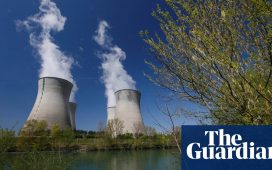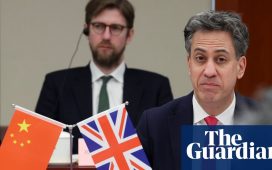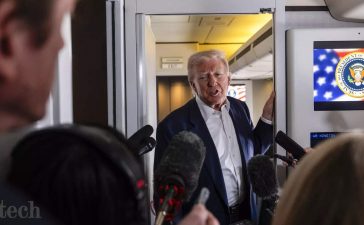Stay informed with free updates
Simply sign up to the UK energy myFT Digest — delivered directly to your inbox.
UK ministers are drawing up plans for the country’s biggest ever renewable energy subsidy auction as they attempt to hit their challenging clean power target, according to government figures.
Energy secretary Ed Miliband is due to launch a “Clean Power 2030 Action Plan” on Friday, which will set out how the government aims to decarbonise the electricity system by the end of the decade. Last week Prime Minister Sir Keir Starmer named it as one of his “milestone” targets.
The UK subsidises low-carbon electricity projects through “contracts for difference”, where the government guarantees developers a fixed price for the electricity they generate — typically over 15 years — funded via a levy on consumer bills.
In September the new Labour administration announced the results of a CFD auction that secured funding for a record 131 clean energy projects, covering 9.6 gigawatts of energy capacity, capable of powering 11mn homes.
It came after a botched auction round in 2023 under the previous Conservative government in which no offshore wind developers bid because the subsidies on offer were not generous enough to cover rising costs.
Ministers are discussing holding the biggest auction yet in 2025 in a bid to hit the 2030 “clean power” target, which consists of at least 95 per cent low-carbon electricity and gas-fired stations stepping in when renewables output slumps.
“When you think about the long lead times for a project like an offshore wind farm it makes sense to get going with the CFDs now and throw the book at this with a huge auction round as soon as possible, probably next year,” said one government figure. “It would be the biggest we’ve seen so far.”
Such a move could be controversial given heightened scrutiny on energy bills. Developers have to pay consumers back if the wholesale price is higher than the fixed price agreed at auction.
Miliband has said his plans could bring bills down by up to £300 in 2030, although many critics have questioned this claim.
The budget for September’s auction round was set at £1.56bn per year, but how much the projects will actually cost depends on wholesale electricity prices once they are up and running.
Labour’s 2030 target requires a huge boost in the rollout of renewable energy projects such as onshore and offshore wind and solar power, as well as the cables and pylons needed to transfer electricity.
It will also mean prolonging the life of some existing nuclear power stations to keep a supply of regular “baseload” power, which is not subject to changes in weather.
In a report last month, the National Energy System Operator, which was spun out of National Grid this year, set out potential pathways to the 2030 target.
The state-owned entity suggested that companies and households would have to be more flexible about when they used electricity, with households charging electric cars or using washing machines at night, for example, when demand — and prices — are lower.
Under Neso’s modelling, in order for the 2030 target to be met, Britain’s offshore wind capacity would have to jump from 15GW to 43GW-50GW by 2030, while onshore wind would have to rise from 14GW to 27GW and solar would need to treble from 15GW to 47GW.
One person familiar with the discussions said that having a big CFD auction next year was an “obvious conclusion of the Neso report”, given the need for the rapid rollout of green energy.
Britain would maintain up to 4.1GW of nuclear power in 2030, partly from the Sizewell B nuclear power station in Suffolk and by extending the life of at least one other existing station.
The Department for Energy Security and Net Zero said: “We are working with industry to accelerate ways the Contracts for Difference (CfD) scheme and other energy policies can be expanded even further.”
It added: “We recognise the need to deliver the next round quickly, with extra supply chain support, and will publish more details shortly.”
Climate Capital

Where climate change meets business, markets and politics. Explore the FT’s coverage here.
Are you curious about the FT’s environmental sustainability commitments? Find out more about our science-based targets here











